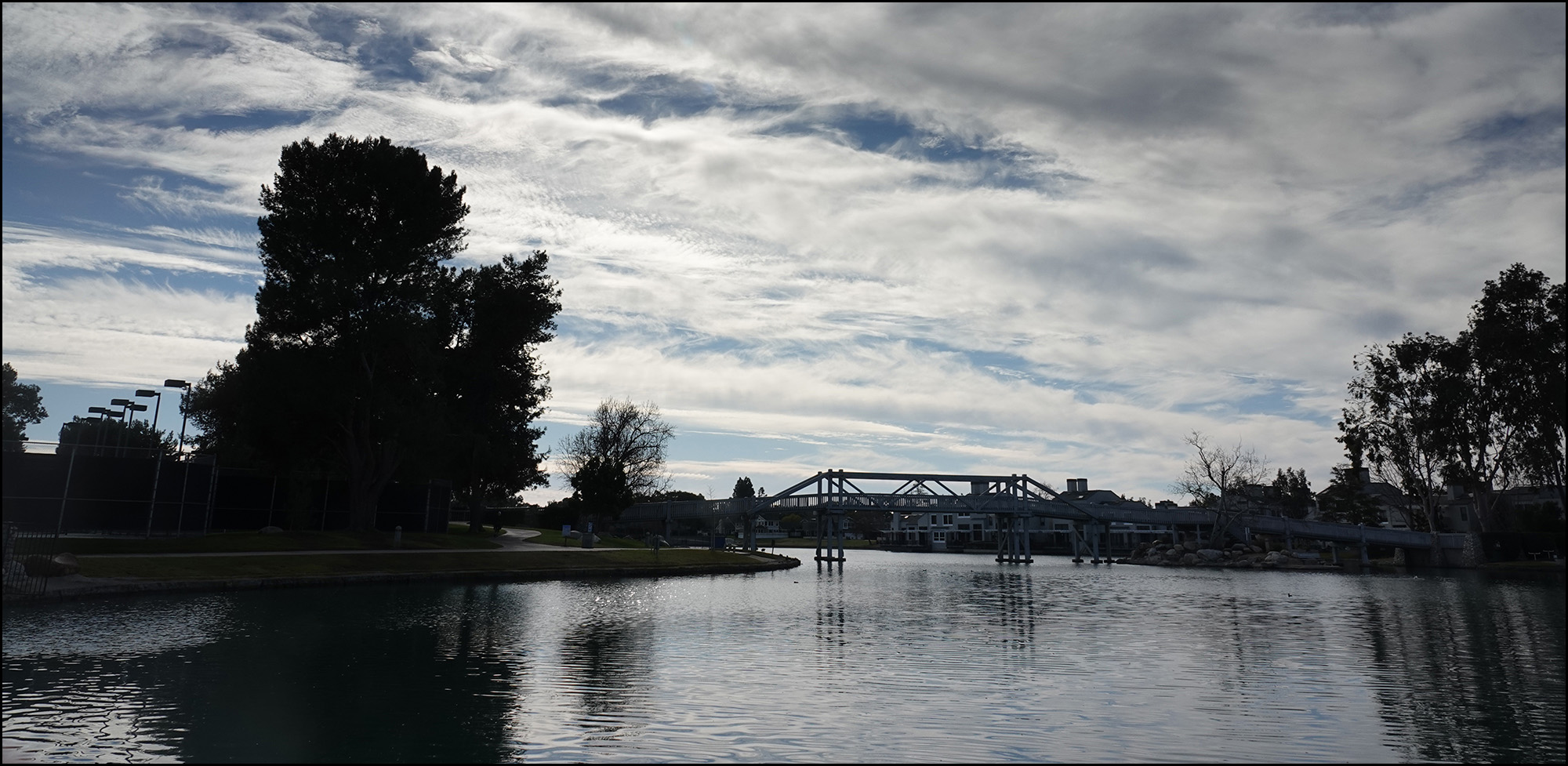This week I've purchased two camera accessories that I've been resisting for years. The first one is designed for problems like this:
 The sky is too damn bright! The foreground is already pretty dark, so I can't reduce the exposure any further, but there are still areas of the clouds that are completely blown out. They're pure white and no amount of Photoshopping will fix it.
The sky is too damn bright! The foreground is already pretty dark, so I can't reduce the exposure any further, but there are still areas of the clouds that are completely blown out. They're pure white and no amount of Photoshopping will fix it.
The answer is a graduated neutral density filter:
 Stick this in front of your lens and the sky is darkened while the foreground is left untouched:
Stick this in front of your lens and the sky is darkened while the foreground is left untouched:
 Both of these photos are straight out of the camera, but in the second one there are no more blown out areas and the whole thing can now be edited to taste. For example:
Both of these photos are straight out of the camera, but in the second one there are no more blown out areas and the whole thing can now be edited to taste. For example:

Tomorrow is catblogging day, which gives me a chance to demonstrate the other piece of equipment I bought. I've been resisting this one for upwards of 40 years, but I finally caved in.

I must say that I like the too damn bright sky and the contrast between it and the foreground. Maybe it's the way my eyes see things.
Here's a guess at the other piece, to be revealed tomorrow.
The anglerfish is a very strange creature. One of its strangest attributes is the lure, attached to the top of its head, that it dangles in front of its mouth to attract prey.
You can see a picture at the top of this article:
https://www.mentalfloss.com/article/57800/horrors-anglerfish-mating
I'm guessing that ever since he first experienced the conjunction of two of his interests--cats and photography--Kevin has been wishing for a foolproof way to get the cats to be attracted to his camera. He finally broke down and bought a catnip lure to attach to the top of his camera by a wand that dangles the lure just in front of, and above, the lens, thus assuring that he will get lots of good photos of cats looking with varying expressions of interest, curiosity, and fascination.
My thought too, but you express it so much better than I could!
Just attach it to the hotshoe.
Tomorrow is catblogging day, which gives me a chance to demonstrate the other piece of equipment I bought.
A cat cam?
Ah, some real close ups....
I always found split ND filters devilishly hard to work with on a traditional (film) SLR, where they were much more necessary. Are they any easier to work with in this brave new world of digital cameras?
You bought Monkey for the cats to play with and be photographed?
Well done, really like that last shot.
Kevin: An alternative is to set the camera to take three quick photos, one under exposed a stop or two, one normal and one overexposed a bit. Do this by changing the time of the exposure so as not to change the characteristics of the image. There is probably a setting that will do this for you.
Then use HDR software to combine them into one image. I'm guessing Photoshop can do this. I haven't tried it with my DSLR in years. I just do that on my iPhone now.
Actually, you can do this in PS:
https://fixthephoto.com/hdr-photoshop-tutorial.html
It probably works better if you save RAW images.
Hell, my camera can do that in situ. Lots of other fun stuff too.
Question from a person ignorant in all things related to photography: which of the three images would we expect to be closest to how the eye sees it in real life? Mind you, I'm not suggesting that's the standard that photographers should aspire to (maybe they should, or maybe not: as I said, I don't know much about photography). I was just curious.
The media specializes in distorting reality. Mr. Drum illustrates this for us here.
The latest release of Lightroom has a Select Sky Masking feature that would give you a pretty darn good selection of the sky where you could adjust the exposure.
Someone else also mentioned HDR in PS and bracketing.
I used to use NDs, but unless your horizon line is pretty flat, you still have to do a fair amount of brush work in PS.